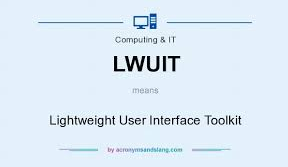Packt has released a new book, LWUIT 1.1 for developers of Java ME, which helps developers to use Java ME and expand the Java library with custom classes. By Biswajit Sarkar, this book will help readers develop a Device Independent User Interface with a wide range LWUIT components.
LWUIT, easy User Interface Toolkit, is a library user interface, which offers an enhanced user interface and the possibility of a clean API, which inspires Swing. LWUIT library contains tools that make the application user interface consistent and gets visual luster interface properties. Everything is customizable, and extensible in LWUIT, with its source and binaries are freely available for personal and commercial use. So if there are missing components, users can create their own features and plug it into your code.
Java ME developers learn how to create and customize the way the common components will be displayed on the screen, add user interface elements and style them to collect the complex interfaces using containers, labels and lists. The book presents the basic structural features of LWUIT which are important for the skillful use of API. This helps users organize the interface using layout managers, and add animations and transition to their use.
Readers will learn to develop a theme for visual consistency, use of artists, as well as create resources with a designer LWUIT. They will also learn how to create custom components by extending the component, and debug applications using the class journal. Users will be allocated to applications with dazzling graphics, which look and behave the same way on different mobile devices with this book.
LWUIT, easy User Interface Toolkit, is a library user interface, which offers an enhanced user interface and the possibility of a clean API, which inspires Swing. LWUIT library contains tools that make the application user interface consistent and gets visual luster interface properties. Everything is customizable, and extensible in LWUIT, with its source and binaries are freely available for personal and commercial use. So if there are missing components, users can create their own features and plug it into your code.
Java ME developers learn how to create and customize the way the common components will be displayed on the screen, add user interface elements and style them to collect the complex interfaces using containers, labels and lists. The book presents the basic structural features of LWUIT which are important for the skillful use of API. This helps users organize the interface using layout managers, and add animations and transition to their use.
Readers will learn to develop a theme for visual consistency, use of artists, as well as create resources with a designer LWUIT. They will also learn how to create custom components by extending the component, and debug applications using the class journal. Users will be allocated to applications with dazzling graphics, which look and behave the same way on different mobile devices with this book.

No comments:
Post a Comment